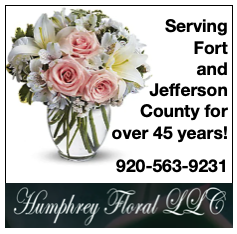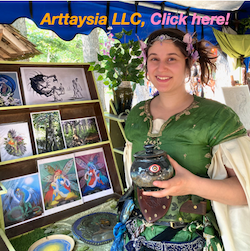Area artist inspires others to say: ‘I can do that’
- Home
- Area artist inspires others to say: ‘I can do that’
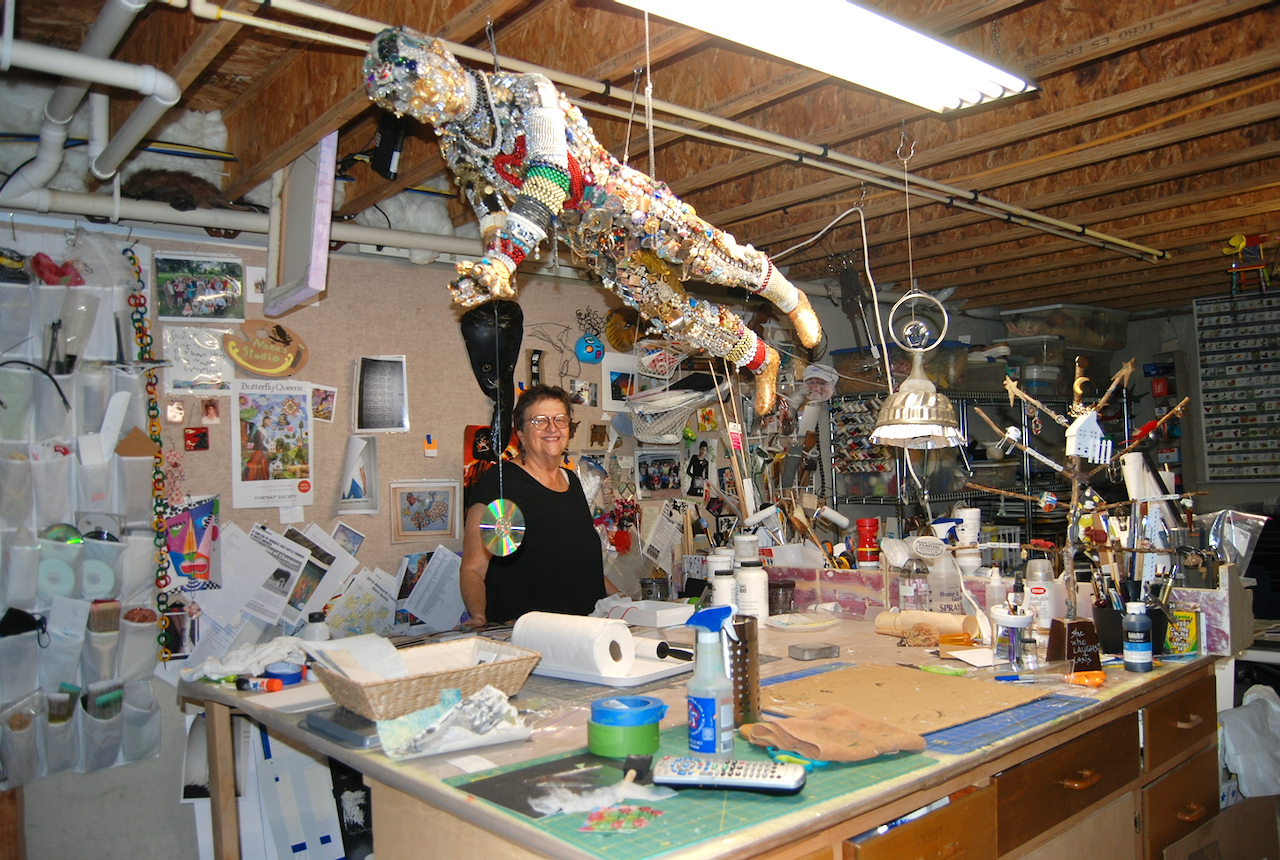
Area artist inspires others to say: ‘I can do that’
By Kim McDarison
Teacher, mother, artist and daughter of a “crafty” mom, Whitewater resident and retired School District of Fort Atkinson Barrie Elementary School teacher Dawn Hunter says she has used art throughout her life to inspire herself and others to say: “I can do that.”
With her upcoming exhibit, which will be placed on display in the Whitewater Arts Alliance’s Cultural Arts Center gallery, 402 W. Main St., Whitewater, in August, Hunter said she hopes her lifelong body of work will inspire gallery visitors to embrace her can-do mantra.
The exhibit, titled: “The Art of Exploration,” will feature some 100 pieces, made using several mediums, including photography, sculpting, ceramics, acrylics, water colors, collage, and paper-making. Hunter has been creating the pieces since college and has continued to expand the body of work up to present day, she said.
While she has lived a life immersed in art —colors and shapes pop from nearly every surface within her Whitewater home — she found her direction over time, she said, recalling an early childhood more focused on friends and the intricacies of life in a small river community.
‘Frank Sinatra syndrome’
A single child born to her parents Gordon and Bernice, Hunter said she learned the value of improvising from her mother, whom, she said, during Hunter’s pre-school years, made all of her clothes.
“I didn’t realize we could buy clothes in the store until I went to school,” she said.
Bernice was both crafty and resourceful, Hunter said. She grew up on a farm, but lived most of her adult life in the small river community of Spring Valley, where she raised her daughter as a single parent after her husband, Gordon, died.
He succumbed to cancer when Hunter was 4, she said.
In the 1950s and 1960s, the community had a population of about 1,000 people, Hunter recalled. Her days were spend with friends exploring their surroundings.
“I spent half of my life in the water and half of my life in the hills around it,” Hunter said, adding that each morning, as her mother opened the door, the sun shown in and the child leapt out, returning home at the appropriate meal times.
The community provided her with a wonderful playground to explore, she said, adding: “There was a wonderful hill with interesting lilac bushes, with trails.”
She recalled gathering with the neighborhood children at the top of the hill and, aided by a makeshift sled created from “a waxy box from Joe’s Grocery Store” they would slide down the hillside, which was made slick by dead grass.
“You went pretty fast,” she said.
By the time she was 10, she was the neighborhood babysitter. She found she especially enjoyed being around children, she added, perhaps because she did not have siblings.
Art, she said, was of interest to her; she enjoyed a radio show which aired from Madison, called “Let’s Draw,” and often brought drawing and painting supplies along with her to entertain the children in her care.
“People used to tell my mother that I was creative, and my mom would say that was because I couldn’t follow directions,” Hunter quipped.
“I liked to do things my way — I had Frank Sinatra syndrome,” she said.
Arriving in Whitewater
Hunter left her small town after graduating from high school. She married her husband, Lyle, who, at the time, she said, was the recipient of a National Science Foundation Scholarship.
The couple moved to Portland, Ore., for a summer program in which he was involved, and then to Oklahoma, where Lyle earned his master’s degree in mathematics.
While they lived in Oklahoma, Hunter said she took classes in home economics and fashion design.
It was the early ‘60s, she said, adding that in those years, choices for women looking to have careers were limited. They traditionally found work as nurses, teachers or secretaries.
“At the time I didn’t think they were limited, but I did later,” Hunter said.
As Lyle completed his studies, he learned about an opening at the University of Wisconsin-Whitewater. He was familiar with the institution, having earlier completed his undergraduate work there, Hunter said. He applied and was hired to teach math.
The couple arrived in Whitewater in 1964.
Art, kids and teaching
Upon her arrival in Whitewater, Hunter said, as she worked at the school’s bookstore and became familiar with its teaching staff, opportunities arose for her to take classes. The school offered opportunities for degrees in art and education.
In the mid-60s, Hunter had two children of her own, and stayed home to raise them, continuing to take some classes at night and on weekends.
By the 1970s, the children were old enough to attend school themselves, and Hunter increased her course load, graduating in 1981 with an elementary education degree and a minor in art.
Following graduation, Hunter recalled accepting a teaching job in Waterford, where she served part-time as an elementary school art teacher. A year later, she found herself teaching art part-time at the Fort Atkinson Middle School.
In 1983, she said, changes in curriculum caused an elimination of her position, but she was directed to an opportunity as a first-grade teacher at Barrie Elementary.
Hunter remained a member of the Barrie Elementary School staff, teaching several grades, but primarily second grade, she said, until her retirement in 2002.
While at Barrie, she found that bringing an art component into her lesson plans helped children learn.
“Art projects are so easy to work into curriculum and some kids achieve more successfully by doing art,” she said. It was a tool she found useful throughout her teaching career as she customized projects to complement learning.
While teaching, Hunter took classes at night, ultimately graduating from UW-Whitewater with a double major in education and elementary art, and, she said, she continued her studies, earning a master’s degree.
As she embraced different forms of art, she recalled her mother’s words: I think I can do that.
It became a mantra she shared with others, she said.
Art, for Hunter, expanded into her personal life. In the basement of her then-town of Whitewater home, she formed a workspace where she could allow art projects to develop unhindered by household activities. She focused mainly on painting and sewing, she said.
Public art
Upon her retirement from teaching in 2002, Hunter said she and her husband moved to their home near Trippe Lake. The couple traveled, visiting such places as Paris, Norway, Sweden, Hawaii, and the western portion of the United States.
The experiences influenced her art.
“I just enjoyed working with my hands and making things out of supplies at hand. When you are a teacher, you have a very limited budget for supplies so you have to be creative in what you use,” Hunter said.
“I’ve always experimented with different materials and nontraditional art using things I find. I like found objects as supplies; I like picking up trash and seeing it as something else,” she said.
Also after her retirement, she recalled, people within the community of Whitewater were taking an interest in the “Prairie Tillers” mural, which had been painted in the 1980s by Caryl Yasko on an exterior wall on the east end of West Center Street. The wall, however, was originally an interior elevation. After a building, which had earlier served as the community’s city hall was razed in the 1970s, the wall became an exterior elevation. The mural was painted on a wall that had not been properly prepared to withstand the elements.
Time had taken its toll, Hunter said. A committee formed, of which she was a part, to raise money to properly prepare the exterior wall and repaint the Prairie Tillers mural.
Fundraising efforts for the project began in 2004.
The project stirred in the community an interest in public art, Hunter said. She and other members of the public wanted to capture that momentum. The group organized the Whitewater Arts Alliance as a nonprofit organization in 2004, and offered its first public art project in 2005.
The project provided cutouts in the shape of a fish to members of the public for decorating. The cutouts were then hung from lampposts in the community’s downtown.
Hunter served as the alliance’s first president. During that time, she recalled, the main floor of the city’s White Memorial Building, which had previously been used as office and administrative space, became unoccupied, giving the alliance an opportunity to work with the city and establish a home.
The alliance continues to operate from the building, which is today called the Whitewater Cultural Arts Center.
After the alliance was formed, Hunter said she continued to serve on its board for many years, but last served as a board member some 10 years ago. She supports a changing board, she said, so the alliance “does not become stale or ensconced in a certain philosophy.”
She has continued as a general member of the group since its inception.
Describing the area’s artists, she said: “It’s a wonderful community of like-minded people who are eager to uplift somebody as they are beginning something.”
‘The Art of Exploration’
While Hunter is a founding member of the alliance, and has displayed some pieces of her work in myriad shows, this is her first solo exhibit, Whitewater Arts Alliance Manager Ashe McDarison said.
Musing recently over the varied mediums she plans to exhibit in the retrospective show, Hunter said: “I am not a fine artist. I’m an art educator, so I have some level of skill in a lot of areas.”
Among pieces that will be on display within the exhibit are those that Hunter made in college, and throughout the years, until recent day.
When people come to the gallery to view the art, Hunter said: “I hope they look at something in there and think: I could do that.”
When viewing her art, she said of gallery visitors: “I want them to enjoy it. It’s been very joyful for me.”
The retrospective exhibit of Hunter’s work will open Thursday, Aug. 3 and run through Sunday, Aug. 27. The gallery is open, Thursdays through Sundays, between noon and 4 p.m.
An artist’s reception will be held Saturday, Aug. 5, between 1 and 4 p.m., and a workshop, titled: “Art Greeting Cards 101,” will be held Thursday, Aug. 17, from noon to 3 p.m.
The exhibit, reception and workshop are free and open to the public.
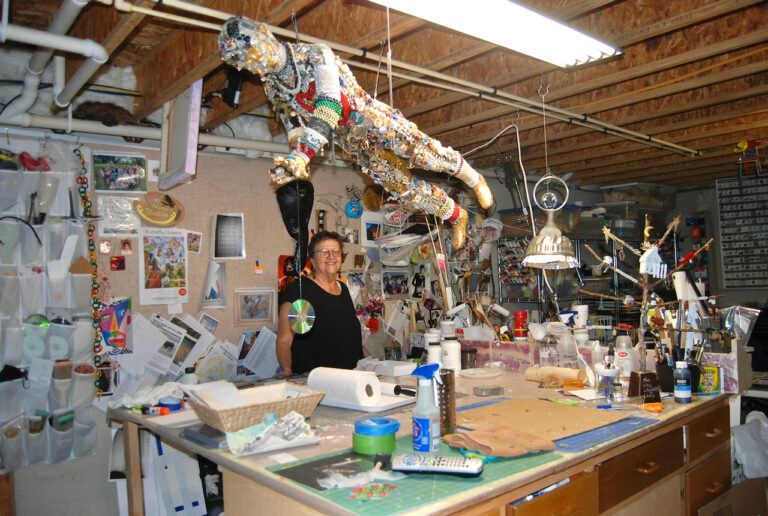
Local artist Dawn Hunter surrounds herself with projects and supplies in a designated workspace in her Whitewater home.
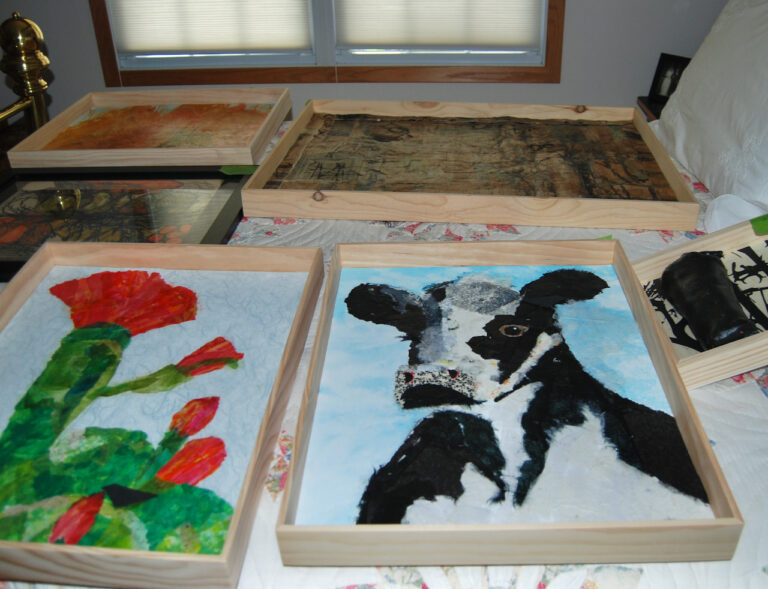
Art selected by Hunter for inclusion in her upcoming solo exhibit is placed in a spare room. The full exhibit, which will open in August, will feature 100 pieces of her work.
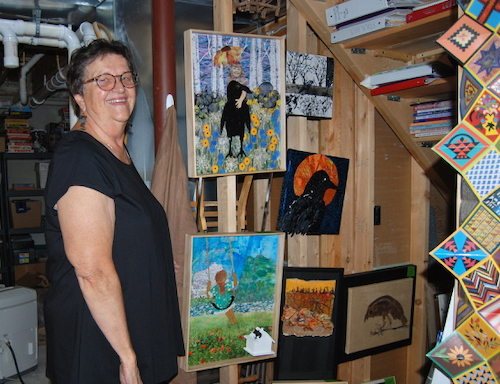
Dawn Hunter shares stories about growing up in Spring Valley. She pointed to several works hung in her workspace which capture her thoughts and memories of her childhood.
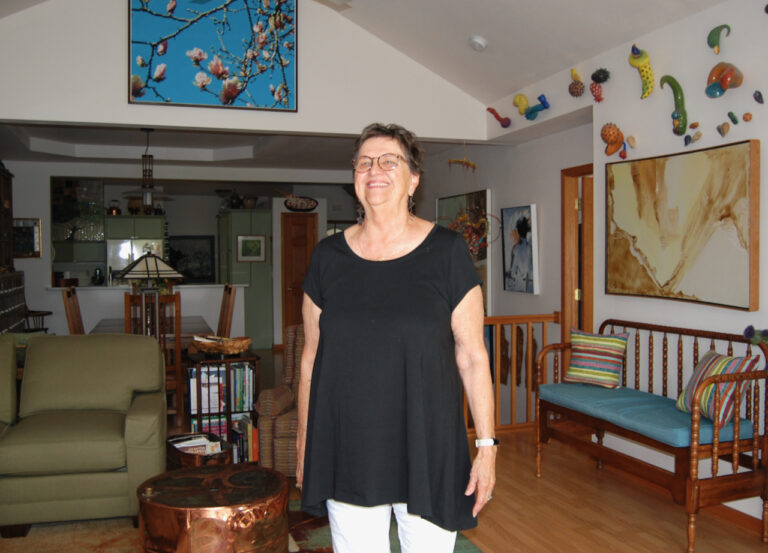
Dawn Hunter is surrounded by art in her Whitewater home. Included in her living space are pieces she made, and pieces which are the work of others.
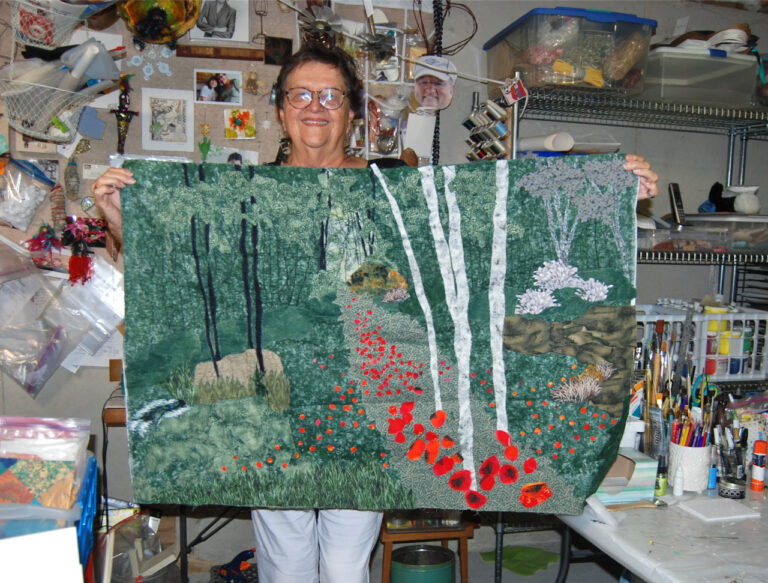
Dawn Hunter holds up a collage piece still in the works. While she did not believe she would display the piece in her upcoming exhibit, she noted that she is devoted to finishing it. She has been working on it for 10 years, she said.
Kim McDarison photo.
This post has already been read 2719 times!
Kim
Our Advertisers
Most Read Posts
Categories
- Advertisers
- Area events
- Art, culture
- Business
- Community
- County
- Crime, court
- Culture
- Diseases
- Economics
- Food
- Government
- International
- Law and Court
- Lifestyle
- Obituaries
- Opinion
- Police, fire, EMS
- Religion
- School
- Science
- Technology
- Today's features
- Today's news
- Top Stories
- Travel
- Uncategorized
- University
- World







